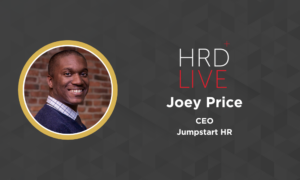-
Provided by

- Date published: Jun 10, 2023
- Categories
Having revolutionized technology and product teams, the principles of agile workflows are frequently adopted by a variety of divisions, from marketing to management. HR is, of course, no different, and a continuous improvement methodology has become increasingly popular amongst HR leaders. From performance management to people operations, continuous improvement is transforming the people experience across the employee lifecycle. With employee fatigue a core blocker to the long-term success of DE&I initiatives, many organizations struggling to make consistent progress toward long-term objectives may benefit from an agile approach to inclusion. Kraft Heinz is proof that this model can work. Its continuous improvement and engagement approach to DE&I is ensuring consistent progress toward its 2025 objectives. As of March 2023:
- Kraft Heinz UK reached 50% women in leadership roles, contributing to the global gender parity aspiration
- 13% of Kraft Heinz UK salaried employees identify as an ethnic minority, an 18% jump from March 2021 (2 percentage points)
Alessandra de Dreuille, People & Performance Director for Northern Europe, speaks to HRD about Kraft Heinz’s ongoing and iterative journey to a more inclusive and equitable future for the brand.
Kraft Heinz 2025 DE&I strategy
By 2025, Kraft Heinz aspires to reach 50% representation of women within management roles across the globe, and demographic parity within the regions it operates, including a 17% representation of people who identify as ethnic minorities in its salaried UK employee population.
“Across our entire population, we want to make sure we are representative of the communities in which we operate,” explains de Dreuille. Although Kraft Heinz’s journey to create a diverse and inclusive workplace is much broader across company leadership, the decision to declare clear benchmarks originated from one employee.
“They started the debate about whether we should have quotas, or not, in our business. She put together a research-backed case for the Northern Europe CEO, who presented it to Kraft Heinz’s worldwide CEO.
“The result was the creation of the aspirations as a commitment externally and internally that we were going to work together towards these aspirations without making them rigid targets or using quotas.”
Kraft Heinz Northern Europe is well on the path to parity. Achieving 50% of women in leadership roles two years ahead of the 2025 landmark is a huge achievement. It is also making progress across different geographies with race and ethnicity, as indicated by an 18% jump in UK salaried employees who identify as ethnic minorities within two years.
So, with an agile approach centered on continuous improvement and engagement, what has helped Kraft Heinz Northern Europe push its inclusion strategy forward? And how will it continue to improve in areas such as ethnic minority representation?
Continuous improvement
To continually improve and evolve its inclusion strategy, Kraft Heinz habitually returns to basics. In 2019, it upgraded its offering for primary and secondary carer leave to six months and three months respectively. “That already put is in the top quartile for company benefits in the industry,” notes de Dreuille. “We’ve seen senior leaders taking the leave, and its increased engagement from our female leaders who were historically less engaged.” But taking an agile approach to DE&I means continually seeking flaws in your inclusion strategy.
“We started observing that after taking this leave, the return to work wasn’t smooth. The performance record of the individual wasn’t tracking as high as we expected, and we weren’t seeing the same level of progression compared to their peers.”
Moreover, there was a lack of support in some specific cases such as bereavement or IVF treatment. There was also a lack of support for parents with older children, or women going through menopause. “One of our HRBPs started the investigation,” explains de Dreuille. “She ran a benchmark across other companies and interviewed those who had taken advantage of the benefits previously.”
Benchmarking and primary research
Salary benchmarking is a common strategy for organizations comparing how they perform against industry standards in areas such as compensation. An organization in a P50 position sits at the 50th percentile: Better pay than 50% of comparators, but not as well as the other 50% of comparators.
Beyond compensation, aggregated data is not as readily available for more detailed policies such as bereavement leave. However, aware of the importance of external benchmarking, de Dreuille highlights the more manual approach Kraft Heinz Northern Europe took to gather information.
“It was a lot of desk research to look around our peer companies, as well as organizations like Monzo and other tech companies that we know are always ahead of the curve. We conducted quick, basic interviews and we’re also a part of the Diversity in Grocery network. We also heard from the stakeholders who had used the benefits in the past.”
The collective research, as De Dreuille mentioned, showed gaps in Kraft Heinz Northern Europe’s company benefits. For example, primary carers returning to work benefit from an Eased Return to Work scheme whereby, for the first eight weeks back at work, they can work four days a week whilst still receiving five days’ remuneration. However, across the four days of work, a consistent lack of sleep was hindering the productivity of some parents. All employees with young children, now have access to a sleep consultant. Moreover, Kraft Heinz Northern Europe made further improvements to its child bereavement, menopause, fertility cycle, and pregnancy loss leave policies, established parental support groups, workshops, and coaching, and created menopause support groups and workshops.
Data-driven improvement
The Kraft Heinz Northern Europe HR team reviews core KPIs every month to determine indicators and actions for improving employee experience. Splitting metrics such as turnover or engagement by gender and ethnicity highlight specific issues that the HR team would otherwise miss. Augmenting this data with qualitative insights from bi-yearly reviews and exit interviews creates a more textured indicator of areas for improvement. “It’s a starting point,” explains de Dreuille. “We can then find solutions either from individual initiatives, like with the 2025 aspirations or from our networks and business resource groups.”
Continuous engagement
Reviewing the monthly performance and uptake of its benefits policies and qualitatively assessing the engagement of employees who identify as female or ethnic minorities keeps Kraft Heinz Northern Europe on a consistent path of improvement toward its 2025 aspirations. Team members work closely with benefit providers to track how much employees used each benefit compared to the forecasted amount.
To drive continuous engagement with its benefits program, Kraft Heinz Northern Europe has established a culture and system of support around these policies. De Dreuille emphasizes the importance of senior business stakeholders in role-modeling the use of benefits.
“Twice now we’ve had our sales director take three months of secondary carer leave. I have twice taken six months of primary carer leave. There are plenty of other examples of senior stakeholders using the policies.
“Each time we use it as an opportunity for other employees. During the latest three-month absence of our sales director, one of his team members stepped into the role. It’s been a great development and growth opportunity for other members of the team.”
This level of engagement has been particularly important for teams and divisions in job roles that have historically been male-dominated both inside and outside Kraft Heinz, including sales.
“Over time, we’ve been correcting it. Now, we’re closer to 40% female in manager or leadership roles. Our sales director has played a big part in driving that agenda, and role-modeling the policies.”
Kraft Heinz Northern Europe has also coached managers to navigate situations where employees are planning an absence, or returning to work, with confidence and empathy. “It’s true that often, managers relied a lot on their HR business partner,” De Dreuille acknowledges. “When a team member told their manager they were expecting a baby, for example, the manager would reach out to HR and become acquainted with the policy on the spot.” In the UK, Ireland and Nordics, Kraft Heinz managers receive a specific coaching program on handling parents returning to the office.
Kraft Heinz: ongoing improvements for 2025
Reflecting on the learnings of the past two years, De Dreuille highlights the importance of a consumer-first approach, once again borrowing a crucial product management principle. “We always need to be making sure we listen to continuous feedback. Our role as an HR team is to find a solution and facilitate the implementation,” she says.
Kraft Heinz Northern Europe has a variety of further improvements to its benefits program in the works. “We’re launching a new scheme, TEDSPremier, that enables tax relief on nursery payments to help parents save up to 40% of their annual fees a year,” De Dreuille shares.
Moreover, Kraft Heinz Northern Europe has noticed engagement amongst its ethnically diverse population is lower than average. Through the Diversity in Grocery network, a Coca-Cola DE&I team lead is running focus groups for Kraft Heinz Northern Europe employees. “Our team isn’t facilitating the listening group, which hopefully gives our people the place to feel safe enough to share. It should be a great step on our journey of continuous improvement,” De Dreuille concludes.








